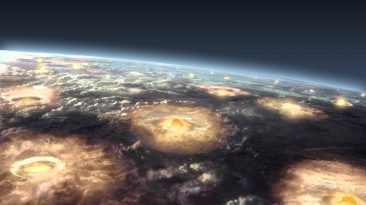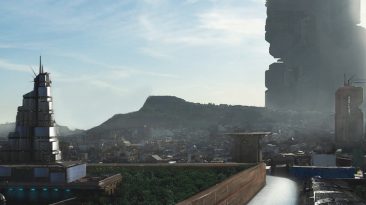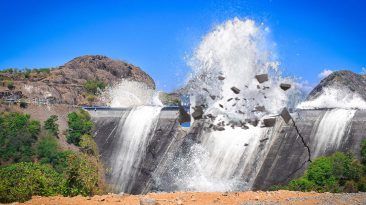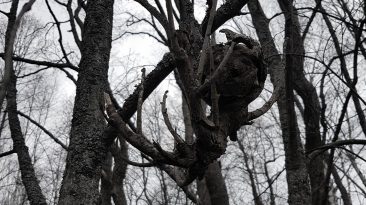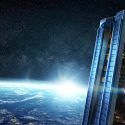It’s the end of the world as you know it. Every human on Earth suddenly went extinct. And it’s time for nature to make its ultimate comeback. What would happen to your home and your city? Why would this doom the planet to a nuclear meltdown? And would any trace of human existence manage to live on?
Whether it was a global pandemic, a planet-wide volcanic event or a gigantic space rock, we reached the end of the line for our species. Every single human on Earth is gone. For good. While there’s no hope for humanity to make a comeback, we’d be leaving behind a lot of stuff. Cities. Highways. Waste. Time to see just how long it would take for the last remaining traces of human life to disappear.
ONE WEEK
The first week of life on Earth without humans would be tough for all the pets. Without you, your furry companions would need to get outside and find food for themselves. So hopefully you left a window open for them. Your peace lily would stand no chance. But they wouldn’t be the only thing at stake with you gone for just one week. Soon the world would become radioactive.
The thing is, our nuclear plants produce nuclear waste. These pools of spent nuclear fuel need to be constantly cooled off with water. That water needs electricity to circulate. Without humans to maintain the electrical infrastructure, soon nuclear facilities around the world would start losing power. And that would cause a disastrous chain reaction.
The water that used to cool down nuclear waste would stop running and begin to boil off. This would expose nuclear waste, causing it to catch fire. All this waste would explode, covering the planet in deadly radioactive chemicals.
Ecosystems around the world would start dying from all the radioactivity. Many of these chemicals would remain dangerous for 300 years. And some, like plutonium, would stay radioactive for the next 240,000. But let’s not get too far ahead of ourselves.
ONE YEAR
About one year after we’re gone, nature would begin to reclaim our roads and highways. Moss and fungus would grow everywhere. And when the first winter hit the planet, these roads would start to crumble. All the freezing and thawing would cause water from melted snow to flow into the cracks.
In these cracked vacant streets, new plants would grow. There would be weeds like mustard and shamrock. In a few more years, grass. In forests poisoned by radiation, there wouldn’t be any birds singing this year. But further away from these deadly areas, animal populations would start to boom.
There wouldn’t be any humans to hunt them or force them out of their natural homes anymore. Without pesticides, insects would reproduce quicker, taking over the globe. This would mean much more food for all kinds of other animals, like reptiles and rodents.
50 YEARS
Fast-forwarding a bit, you’d start to see our empty cities undergo major changes. London’s Trafalgar Square would be growing young trees. Berlin’s Brandenburg Gate would be surrounded by forest. In New York City, a lot would be going on underground. Half a century would have gone by since the last time anyone from a maintenance crew managed any of its 753 subway pumps that prevented rainstorms from flooding the rails.
There would now be a network of underground rivers below New York’s concrete landscape. Steel columns supporting the streets above would buckle and create waterways through Park Avenue and Wall Street. Your abandoned house and your neighborhood would all be in pretty bad shape. Roofs would leak. Nails would rust. Buildings would start collapsing. In major cities, streets would be littered with glass falling from decaying skyscrapers.
150 YEARS
All those skyscrapers would crumple into massive piles of rubble. Despite the city being flooded, New York’s Grand Central Station and other stone buildings like it would still be intact. And good news. I guess? All your now-worthless money would still be safe and sound in bank vaults that would never be reopened. Famous works of art wouldn’t be so lucky.
Without climate control and electricity, museum vaults would be less secure. Water would leak in and mold would cover everything. Ironically, thousand-year-old ceramics would continue to survive just like fossils.
500 YEARS
Five hundred years later, a forest would now cover where your home once stood. But buried in the dirt could still be the remains of many of your aluminum appliances and stainless steel cookware. Sadly you wouldn’t be around to cook any good meals with them anymore.
With every stretch of black asphalt now overtaken by trees and grasses, temperatures would drop all over the world. The atmosphere would undergo changes as it continues to recover. Without humans, there would be less carbon dioxide in it. The initial boom in animal populations after our disappearance would stabilize by this point. Predators, like wolves, would once again roam around Europe hunting in packs.
ONE MILLION YEARS
Jumping way ahead into the future, would anything remain of human civilization? You’d still be able to make out the faces of former U.S. presidents in the granite of Mount Rushmore, but don’t expect many facial features. A lot of the rock would significantly erode.
There would also be some remaining pieces of Egypt’s Great Pyramid of Giza and the Great Wall of China. Time wouldn’t be kind to them, and both would be barely recognizable versions of the former world wonders.
FIVE BILLION YEARS
At this point, everything that humans left behind on Earth would be consumed by the Sun as it expands and destroys the planet. If you’re worried about humanity disappearing into nothingness, there could still be a human footprint to be found.
The Voyager space probes would be somewhere out beyond our Solar System. Maybe some alien civilization would find them and learn that once upon a time, there was human life on Earth. But what if those aliens discovered us a little sooner. Like tomorrow.
Sources
- “How Human Extinction Would Change The Earth | BBC Science Focus Magazine”. Duncan Geere. 2020. sciencefocus.com.
- “What Would Happen To Earth If Humans Went Extinct?”. Emma Bryce. 2020. livescience.com.
- “A World Without Humans? It All Falls Apart”. Janet Maslin. 2007. nytimes.com.












